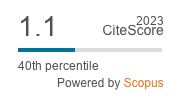Malaysian Journal of Mathematical Sciences, March 2025, Vol. 19, No. 1
Numerical Solution of Extended Korteweg-de Vries Equation with Cubic Nonlinear Term and Fifth-Order Dispersion Term
Shamshu, N. M. L. K., Alias, A., and Loy, K. C.
Corresponding Email: [email protected]
Received date: 4 April 2024
Accepted date: 7 October 2024
Abstract:
This article addresses the problem that the Korteweg-de Vries (KdV) equation does not fully capture the complexity of nonlinear waves. To address this issue, we solve the extended Korteweg-de Vries (eKdV) equation, which includes the higher-order nonlinear and dispersion terms. The main objective is to investigate how cubic nonlinearity and fifth-order dispersion terms affect solitary waves propagation. A unique aspect of this study is the use of the Pseudospectral (PS) method, which allows for much longer numerical simulations compared to the previous studies without any existing the higher simulations frequencies. The results show that the Gardner equation, which dominant with nonlinear waves, leads to steepening and breaking of solitary waves. In contrast, the Kawahara equation, which reflects dispersive waves, exhibits instability and produces oscillatory tails. These findings provide valuable insights into the behavior of solitary waves and highlight the effectiveness of the Pseudospectral method in studying complex wave phenomena.
Keywords: pseudospectral method; extended Korteweg-de Vries equation; cubic nonlinear term; fifth-order dispersion term; Gardner equation; Kawahara equation









